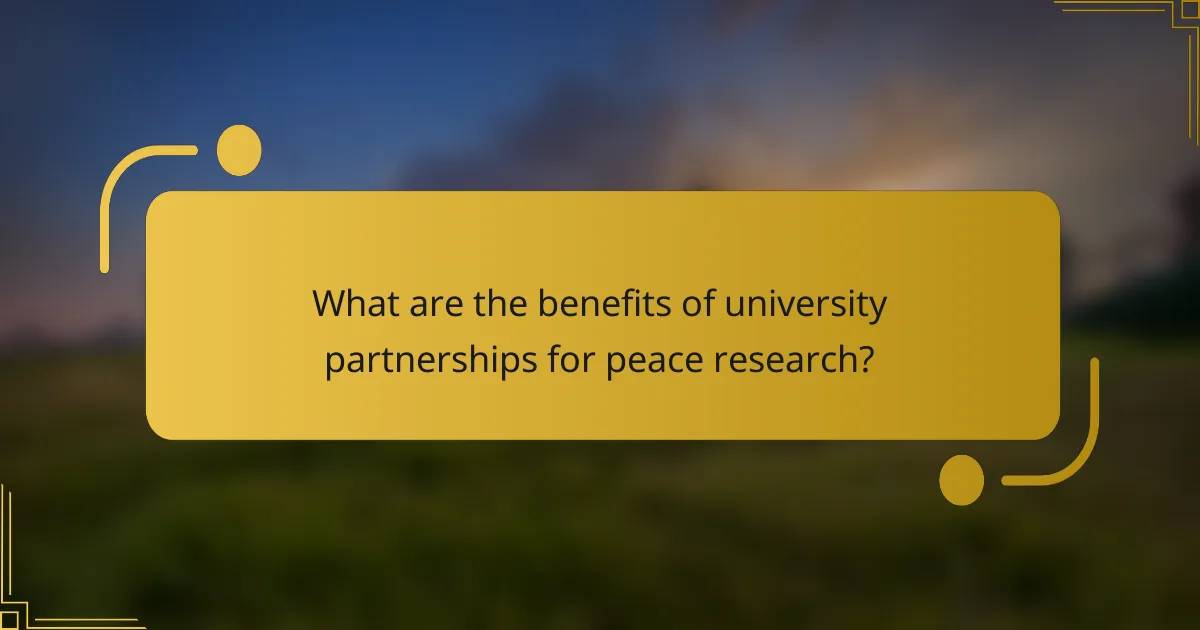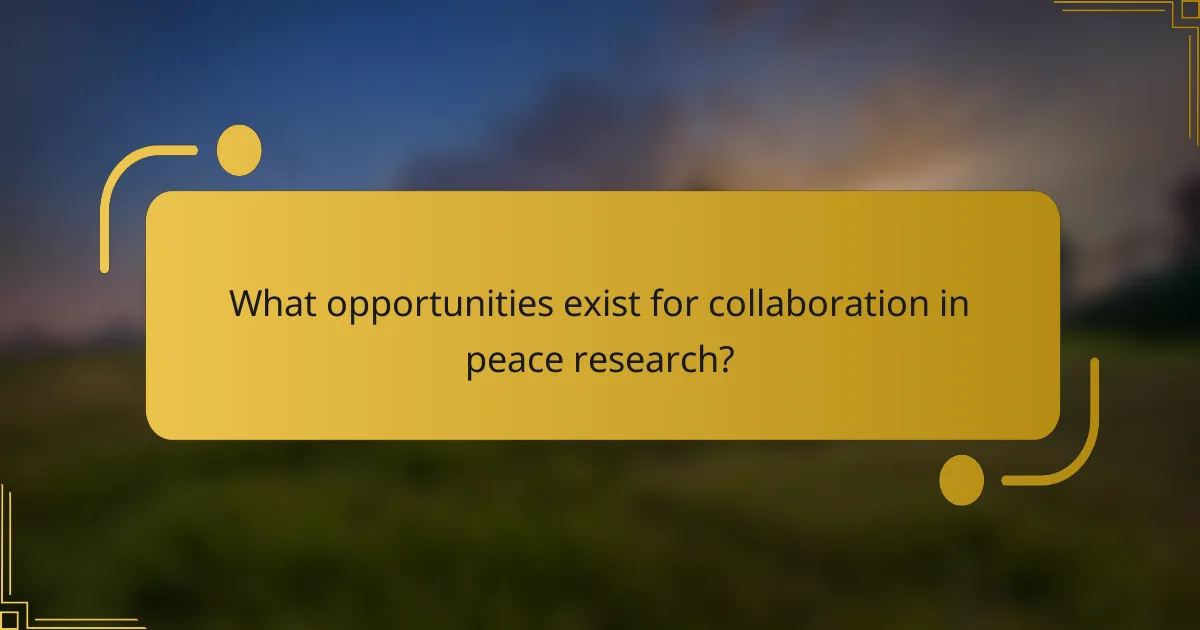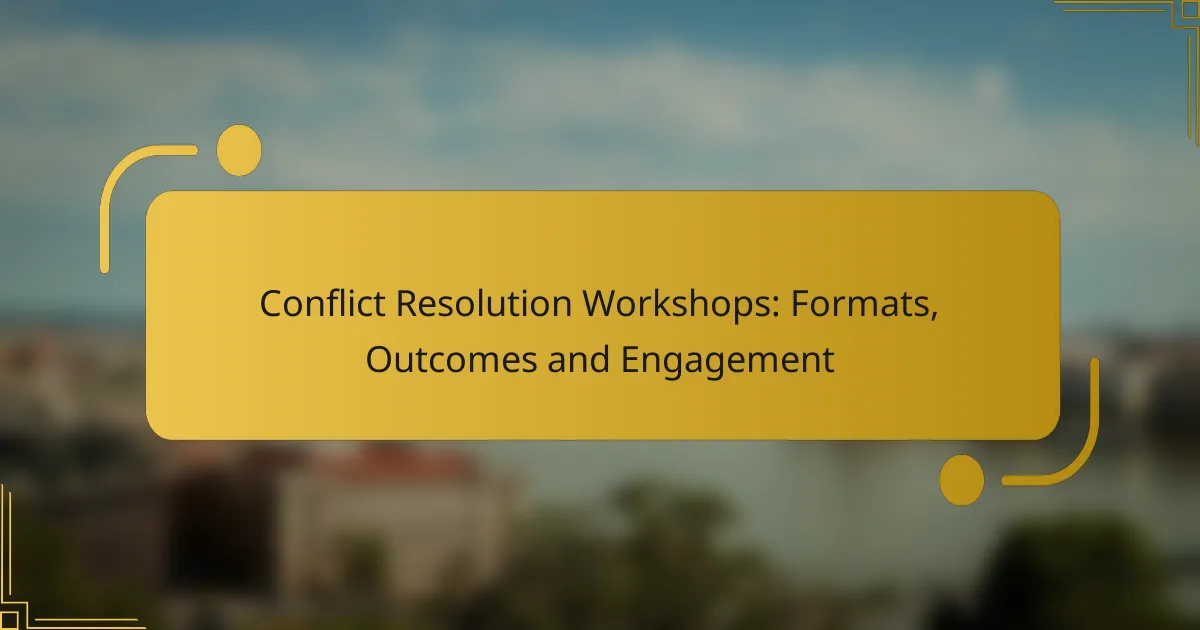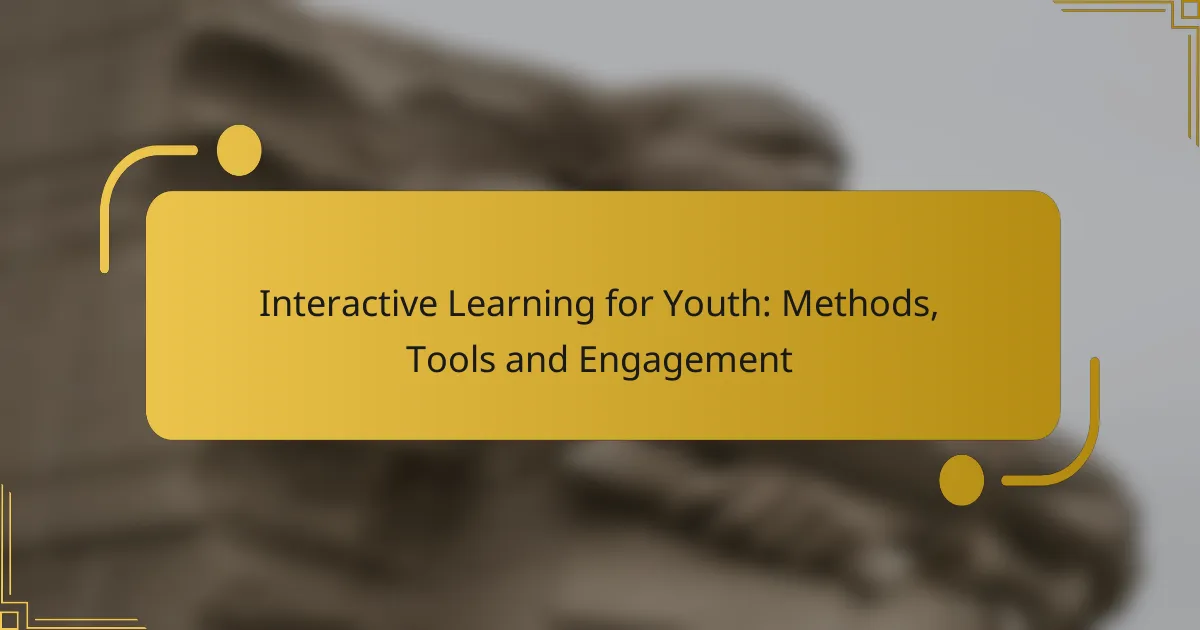University partnerships play a crucial role in advancing peace research by promoting collaboration among diverse institutions, which enhances resource sharing and expertise. These alliances not only lead to innovative approaches in conflict resolution but also provide increased funding opportunities and broader policy influence, ultimately amplifying the impact of peace initiatives.

How do university partnerships enhance peace research in the United States?
University partnerships significantly enhance peace research in the United States by fostering collaboration among institutions, pooling resources, and leveraging diverse expertise. These collaborations lead to innovative solutions and a more comprehensive understanding of conflict resolution and peacebuilding strategies.
Collaborative research initiatives
Collaborative research initiatives allow universities to combine their strengths and focus on specific peace research topics. By working together, institutions can tackle complex issues such as conflict resolution, social justice, and international relations more effectively than they could individually.
For example, a partnership between a university known for its political science department and another with a strong sociology program can yield insights into the social dynamics of conflict. Joint projects often result in more robust findings and greater impact on policy and practice.
Joint funding opportunities
University partnerships can access joint funding opportunities from government agencies, non-profits, and international organizations. Collaborative proposals often have a higher chance of success due to the combined expertise and resources of multiple institutions.
For instance, a coalition of universities might apply for grants from the National Science Foundation or the U.S. Institute of Peace, increasing their funding potential for peace research projects. These funds can support research activities, workshops, and dissemination of findings.
Shared resources and expertise
Sharing resources and expertise among partner universities enhances the quality and scope of peace research. This can include access to specialized databases, libraries, and research facilities that may be unavailable to individual institutions.
Additionally, faculty members can exchange knowledge and methodologies, enriching the research process. For example, a university with a strong quantitative research team can collaborate with one that excels in qualitative analysis, leading to more comprehensive studies.
Cross-disciplinary approaches
Cross-disciplinary approaches in peace research benefit from the integration of various academic perspectives. Partnerships often bring together experts from fields such as sociology, psychology, law, and environmental studies, creating a holistic view of peacebuilding.
This diversity allows for innovative methodologies and solutions that address the multifaceted nature of conflicts. For instance, incorporating psychological insights into conflict resolution strategies can lead to more effective interventions in post-conflict societies.
Networking and community engagement
Networking and community engagement are vital components of university partnerships in peace research. Collaborations often extend beyond academia to include local communities, NGOs, and governmental organizations, fostering a broader impact.
By engaging with community stakeholders, universities can ensure that their research addresses real-world issues and contributes to practical solutions. Events such as workshops, seminars, and public forums can facilitate dialogue and collaboration between researchers and community members, enhancing the relevance of peace research initiatives.

What are the benefits of university partnerships for peace research?
University partnerships for peace research offer numerous advantages, including increased funding opportunities, broader policy influence, enhanced academic credibility, and improved student engagement. These collaborations can significantly amplify the impact of research initiatives aimed at fostering peace and conflict resolution.
Increased funding access
Collaborating with other universities or organizations can open doors to a wider array of funding sources. Joint research proposals often attract attention from governmental and non-governmental organizations that prioritize collaborative efforts, potentially leading to grants in the range of tens of thousands to millions of dollars.
To maximize funding opportunities, universities should focus on aligning their research goals with those of funding bodies. This alignment can enhance the likelihood of securing financial support for peace research initiatives.
Broader impact on policy
University partnerships can significantly influence public policy by combining diverse expertise and perspectives. When multiple institutions collaborate, they can produce comprehensive research that addresses complex issues related to peace and conflict, making their findings more compelling to policymakers.
Engaging with policymakers through joint initiatives can lead to the implementation of research findings in real-world scenarios. This collaborative approach ensures that peace research is not only theoretical but also practical and applicable in policy discussions.
Enhanced academic credibility
Collaborative research projects can bolster the academic credibility of participating institutions. By working together, universities can leverage each other’s strengths, leading to high-quality publications and presentations that are more likely to be recognized in the academic community.
Publishing joint research in reputable journals can enhance the visibility and reputation of all partners involved. This increased recognition can attract further collaboration and funding opportunities, creating a positive feedback loop for peace research initiatives.
Improved student engagement
University partnerships can enhance student engagement by providing opportunities for hands-on experience in peace research projects. Students benefit from exposure to diverse methodologies and perspectives, which enriches their learning experience.
Collaborative programs can include internships, workshops, and joint seminars that encourage active participation. This engagement not only prepares students for future careers in peacebuilding but also fosters a sense of community and shared purpose among participants.

What opportunities exist for collaboration in peace research?
Collaboration in peace research offers numerous opportunities, including access to funding, knowledge sharing, and networking. Universities can partner with organizations and institutions globally to enhance their research capabilities and impact.
International research grants
International research grants provide essential funding for collaborative peace research projects. These grants often come from governmental bodies, NGOs, or international organizations, and can cover various expenses, including personnel, travel, and materials.
When applying for grants, consider focusing on specific themes such as conflict resolution, peacebuilding, or human rights. Collaborating with institutions from different countries can strengthen your application by showcasing a diverse approach and broad expertise.
Conferences and workshops
Conferences and workshops are vital for fostering collaboration in peace research. These events allow researchers to present their findings, exchange ideas, and establish connections with peers and potential partners.
Participating in or organizing workshops can help build a network of contacts in the field. Look for events that focus on specific aspects of peace research, such as mediation techniques or post-conflict recovery, to ensure relevant discussions and collaborations.
Internships and fellowships
Internships and fellowships provide practical experience and enhance collaboration in peace research. These opportunities allow students and early-career researchers to work alongside experienced professionals, gaining insights into ongoing projects and methodologies.
Seek out programs that emphasize international cooperation or cross-disciplinary approaches. Engaging in internships or fellowships can lead to long-term partnerships and contribute to the overall effectiveness of peace research initiatives.

What criteria should universities consider when forming partnerships?
Universities should focus on aligning their research goals, assessing institutional reputation, and considering geographic relevance when forming partnerships. These criteria help ensure that collaborations are effective, mutually beneficial, and strategically sound.
Alignment of research goals
Partnerships should begin with a clear alignment of research objectives. Universities need to evaluate whether their missions and research agendas complement each other, fostering synergy in peace research initiatives. For instance, a university specializing in conflict resolution may partner with one focused on social justice to tackle multifaceted issues.
It is beneficial to establish shared priorities and outcomes early in the partnership. This can involve joint workshops or planning sessions to clarify expectations and define success metrics. Regular communication about research progress and challenges can help maintain alignment over time.
Institutional reputation
The reputation of partner institutions plays a crucial role in the success of collaborations. Universities should consider the academic standing, research output, and public perception of potential partners. A well-regarded institution can enhance credibility and attract funding, while a lesser-known partner may struggle to gain recognition.
Assessing reputation can involve reviewing rankings, publication records, and previous collaborative projects. Universities should also consider the partner’s network and influence in the field of peace research, as this can open doors to additional resources and opportunities.
Geographic relevance
Geographic relevance is essential for partnerships in peace research, as local context often shapes the issues being addressed. Universities should consider the socio-political landscape of their partner’s location, as well as the cultural and historical factors that may influence research outcomes. Collaborating with institutions in conflict-affected areas can provide valuable insights and enhance the practical impact of research.
When forming partnerships, universities should also evaluate logistical aspects such as travel costs and communication barriers. Proximity can facilitate collaboration through in-person meetings and joint initiatives, while distance may require more robust digital communication strategies. Understanding these geographic dynamics can lead to more effective and meaningful partnerships.



